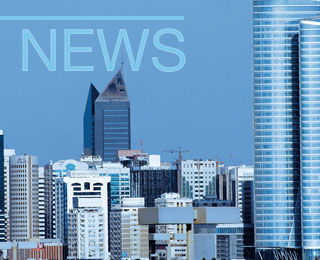HeidelbergCement recorded sales volumes in most business lines around the same level of the previous year in the 1Q22. At 28.4Mt (previous year: 28.4Mt), group-wide cement and clinker sales volumes remained at the previous year’s level. The consolidation-related decline in sales volumes in North America resulting from the sale of the group's activities in the west region in October 2021 was offset by the growth in sales volumes in the other group areas. Excluding consolidation effects, cement and clinker sales volumes increased by 2.1 per cent.
Deliveries of aggregates rose slightly by one per cent compared with the previous year to 61.9Mt (previous year: 61.3Mt). On a LfL basis, deliveries increased by 5.3 per cent. Significant volume growth in the northern and eastern Europe-central Asia, Asia-Pacific, and Africa-eastern Mediterranean Basin Group areas were offset by decreases in sales volumes in western and southern Europe, as well as consolidation-related declines in North America.
Sales volumes of ready-mixed concrete fell by two per cent to 10.6Mm3 (previous year: 10.8Mm3). Excluding consolidation effects, sales volumes grew by 1.6 per cent. While deliveries in northern and eastern Europe-central Asia and Africa-eastern Mediterranean Basin were noticeably above the level of the previous year, with a slight increase in western and southern Europe and Asia-Pacific, sales volumes in North America declined, primarily as a result of consolidation.
Asphalt deliveries decreased considerably by 29.7 per cent to 1.4Mt (previous year: 2Mt). On a LfL basis, deliveries fell by 5.2 per cent.
"The first quarter of 2022 was not an easy one for HeidelbergCement," said Dr Dominik von Achten, managing board chairman. “Despite the continuing uncertainties regarding the supply of energy and raw materials and the associated rise in energy prices, we were able to increase our revenue significantly. Although our result declined in comparison with the same quarter of the previous year, which was exceptionally good, it increased in comparison with the equally strong first quarter of 2020.
"Although there is still a lot of uncertainty concerning energy and raw material availability and costs, we continue to see strong demand for our products in all regions. In particular, demand for sustainable, low-carbon products is growing rapidly. We are optimistic about the remainder of 2022."
Revenue rose significantly by 11.8 per cent in comparison with the previous year to EUR4427m (previous year: EUR3958m). Excluding consolidation and exchange rate effects, the growth amounted to 13 per cent. In particular, price increases in all group areas contributed to the revenue growth. Changes to the scope of consolidation of EUR170m had a negative effect on revenue, while exchange rate effects of EUR109m had a positive impact.
The result from current operations before depreciation and amortisation (RCOBD) fell by EUR145m, ie 26.9 per cent, to EUR394m (previous year: EUR538m). Excluding consolidation and exchange rate effects, the operational decline amounted to EUR140m, resulting in a figure 25.4 per cent below the previous year’s level. The decline in result was attributable to the significantly higher costs of energy and transport compared with the same quarter of the previous year, which could only be partially offset despite increases in our sales prices.
Outlook for 2022 confirmed
"Demand for our building materials remains high in all regions, despite the persistently volatile market conditions," said Dr Dominik von Achten. "In addition, the efficiency programmes with a focus on our sales prices and costs are starting to deliver results. We thus expect to see strong growth momentum for the rest of the year."
Risks that may have a significant impact on its assets, financial, and earnings position in the 2022 financial year and in the foreseeable future are described in the Annual Report 2021.
The risk from the price trend in the raw materials and energy markets has already been partially materialised in the course of the Russia-Ukraine war. In this context, uncertainties remain. Moreover, the IMF lowered its growth forecast for the global economy for the current year in April 2022 from 4.4 to 3.6 per cent. In Europe, the risk of recession has increased as a result of rising inflation and strained supply chains. "We classify this as a general risk with a possible impact on the entire group and possibly a rapid occurrence," said HeidelbergCement.
